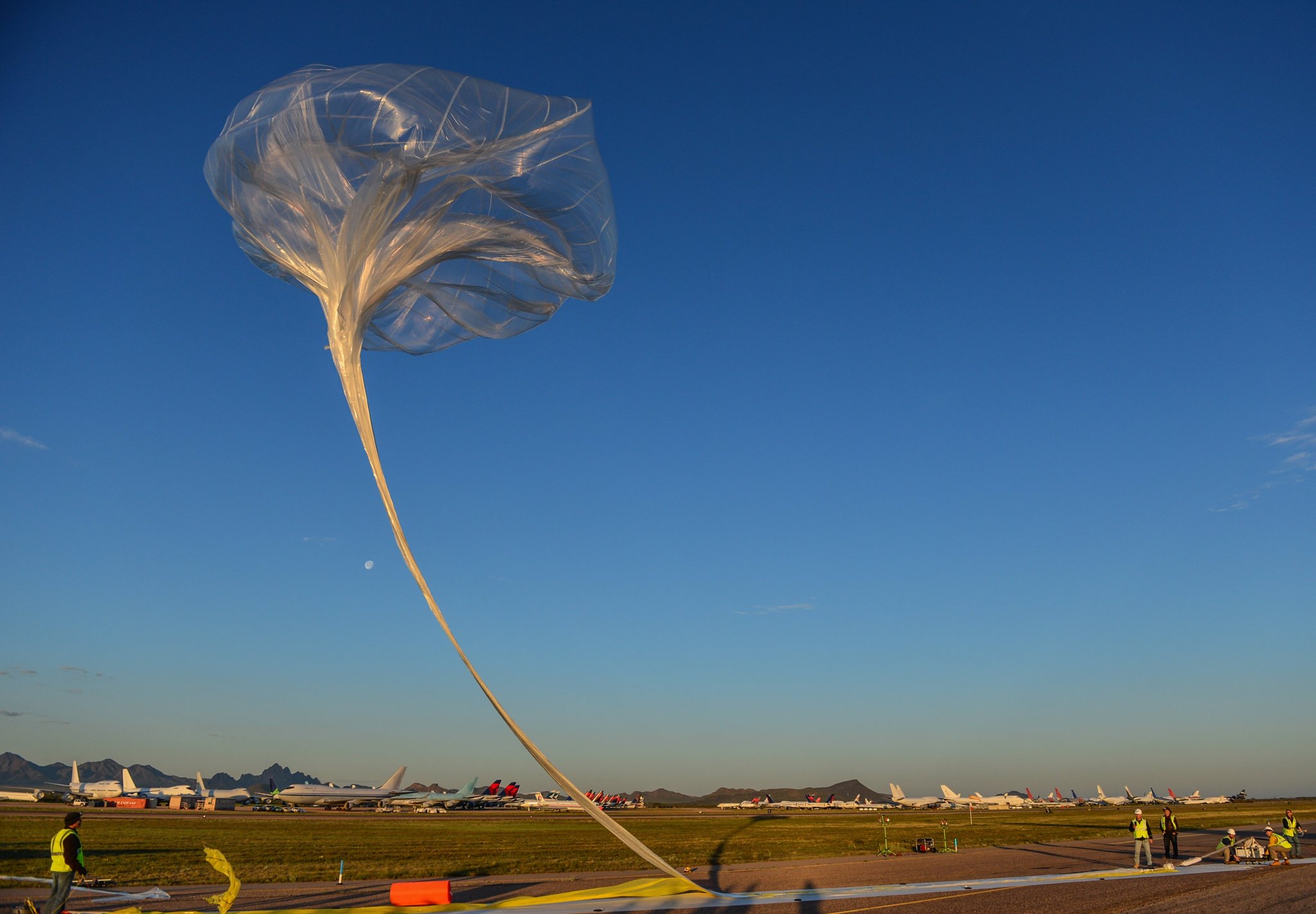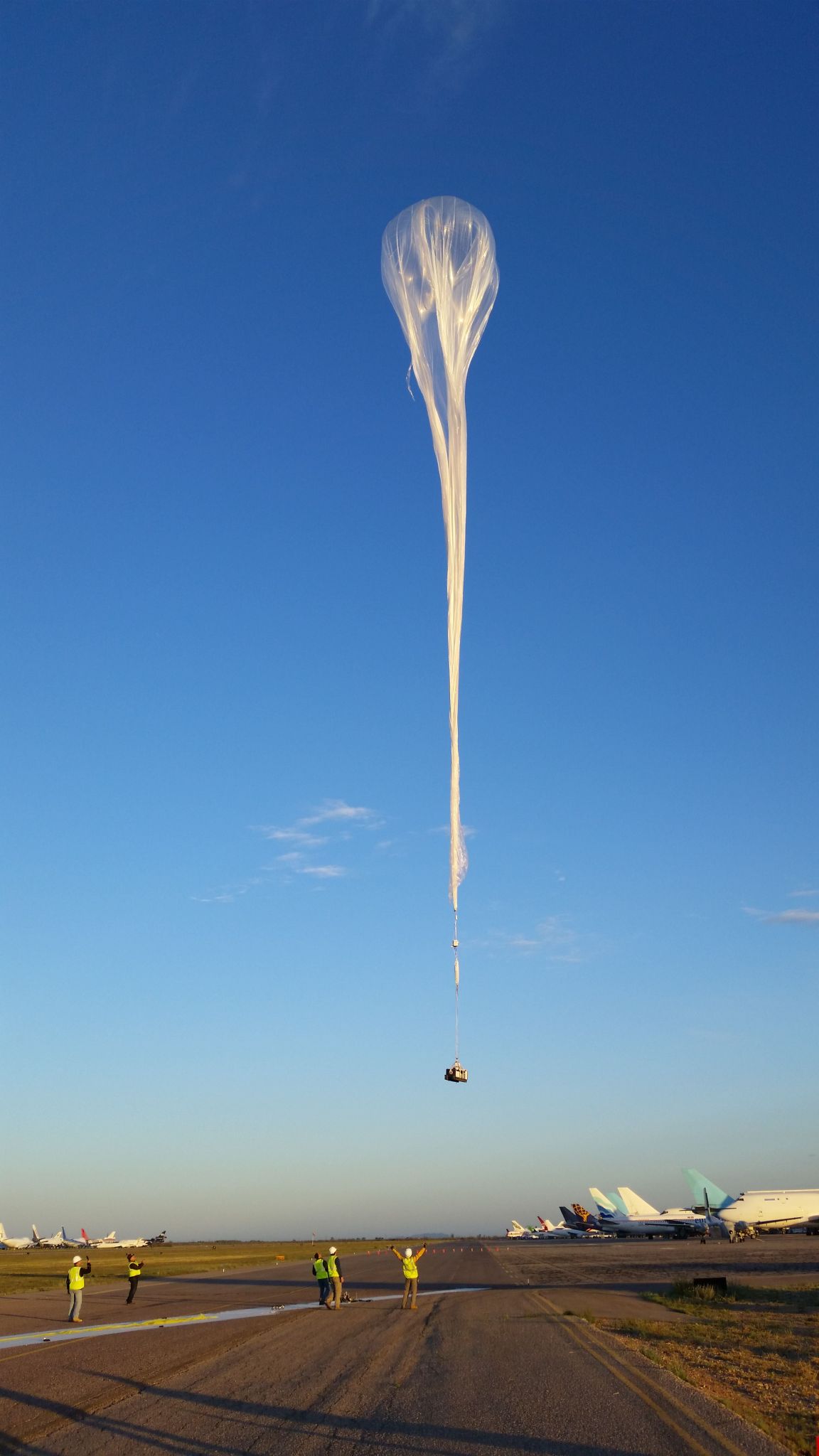NASA’s newest American commercial near-space services provider, World View of Tucson, Arizona, successfully launched its Tycho balloon from Arizona’s Pinal Airfield March 8, carrying two universities’ experiments as part of the agency’s Flight Opportunities Program. The flight is another example of NASA partnering with American businesses to procure and demonstrate viable commercial services to near-space that advance our nations emerging space markets and space technology capabilities while also supporting agency mission needs.
The World View balloon reached an altitude of 105,000 feet and loitered above 98,425 feet for nearly an hour and 45 minutes to test University of Central Florida’s (UCF), Orlando, Planetary Atmospheres Minor Species Sensor (PAMSS) experiment and Erie Pennsylvania’s Gannon University (GU) Cosmic-Ray Calorimeter (CRC).
UCF’s PAMSS is the first mid-infrared, intra-cavity laser absorption spectrometer that will be detecting trace gases and sensing over a large range of pressures, temperatures and concentrations while operating autonomously. This technology could be used for future planetary missions as well as the study of the Earth’s atmosphere.
One of GU’s main objectives with their CRC experiment is to draw interest from undergraduate students entering Science, Technology, Engineering and Math (STEM) careers. This experiment has provided students with the opportunity to gain hands-on research experience, laboratory skills and overall interdisciplinary knowledge and collaboration skills. The CRC payload is designed to detect high-energy cosmic rays and measure the ratio of protons to helium nuclei, providing deeper insight into the propagation history of cosmic rays and helping to discover how the universe works.
“Over the past two years, it has been a pleasure and a privilege to work with the twenty undergraduate students who have participated on this project and see them grow as individuals and as a team,” said Gannon’s Principle Investigator Dr. Nicholas Conklin. “If the students have learned half as much as I have along the way, this has been time very well spent.”
Both experiments were successfully recovered and delivered back to the researchers. The PAMSS team verified that they received data in the correct format, a good sign for mission success.
The World View operations team indicated that the Gannon payload was operational during the entire flight; therefore, there was no need to cycle the power or reboot the payload, an indication of mission success. Final data from these payloads will be evaluated back at their universities.
“I was very satisfied with the payload integration effort and overall flight performance provided by World View,” said Paul De Leon, NASA’s Campaign Manager. “The WV team was very professional and accommodating to the payload provider needs.”
NASA’s Flight Opportunities Program enables the development of technologies by providing affordable access to space environments using commercially available suborbital flights. This helps take promising technologies from industry, academia and government beyond the laboratory environment and gives them the flight heritage needed for infusion into exploration missions.
The program is part of the agency’s Space Technology Mission Directorate, which is responsible for innovating, developing, testing, and flying hardware for use in future missions.
Technology Drives Exploration. https://www.nasa.gov/spacetech





























